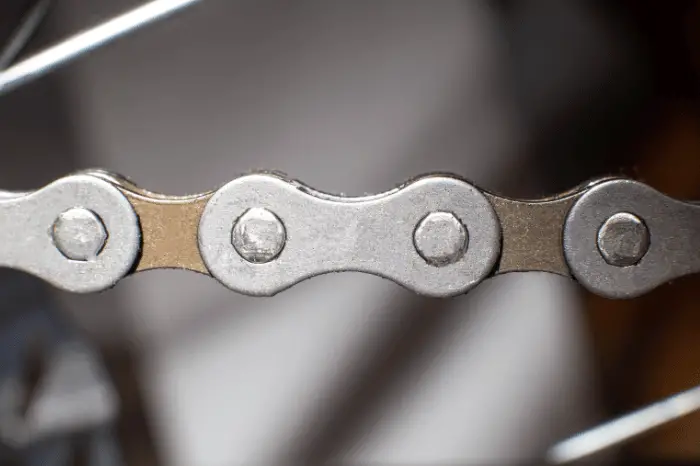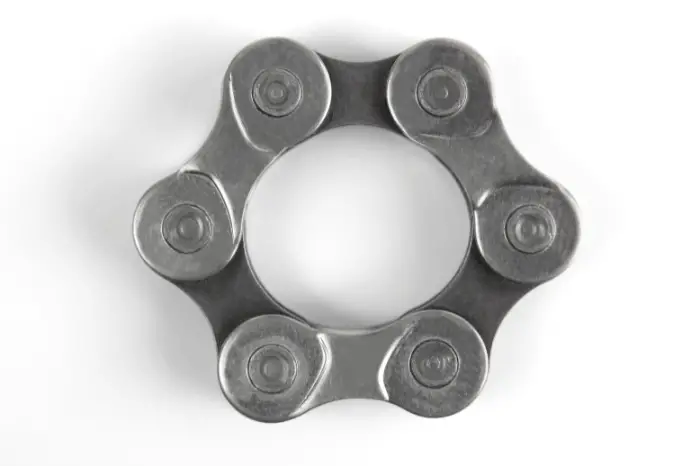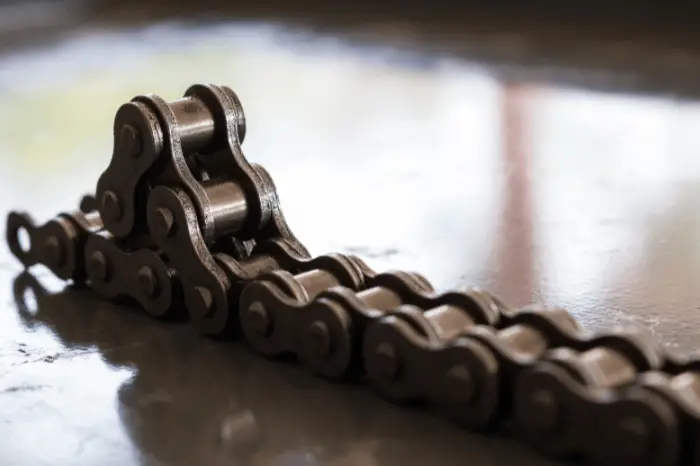
If you’re an avid cyclist, you know that maintaining your bike is crucial to ensuring a smooth ride. One of the most important maintenance tasks is removing links from your bicycle chain. Over time, your chain will stretch and wear out, and removing links is necessary to keep it functioning properly. In this article, we’ll show you how to remove links from your bicycle chain so you can keep your bike in top condition.
Before we dive into the process, it’s important to note that removing links from your chain is not something you should do unless it’s necessary. If your chain is not worn out or stretched, removing links can actually cause damage to your bike. However, if your chain is skipping or slipping, or if it’s visibly worn out, removing links can help extend the life of your chain and improve your bike’s performance. In the next section, we’ll
go over the tools you’ll need to remove links from your bicycle chain.
Tools and Materials Needed
Removing links from a bicycle chain requires a few specific tools and materials. Here are the items you’ll need:
Chain Tool
A chain tool is an essential tool for removing links from your bicycle chain. It’s a small, handheld device that allows you to push the pins out of the chain, making it possible to remove links.
Pliers
Pliers are useful for holding the chain steady while you work on it. They can also be used to remove the master link on some chains.
Replacement Pin or Master Link
If you plan on shortening your chain, you’ll need a replacement pin or master link to reconnect the chain when you’re done. Make sure you get the right size for your chain.
Rags or Shop Towels
Working on your chain can be messy, so it’s a good idea to have some rags or shop towels on hand to clean up any grease or dirt.
Work Stand
While not strictly necessary, a work stand can make the process of removing links from your chain much easier. It allows you to hold the bike steady while you work on the chain, which can be especially helpful if you’re new to this type of maintenance.
With these tools and materials at your disposal, you’ll be ready to start removing links from your bicycle chain.
Understanding Chain Anatomy

Before you can remove links from your bike chain, it’s important to understand the anatomy of the chain. A bike chain is made up of a series of links that are connected together. Each link consists of two outer plates, two inner plates, and a pin that holds them together.
The outer plates have small holes that the pins fit through, while the inner plates have larger holes that allow the chain to flex. The pins are held in place by friction and pressure from the plates.
There are different types of chains, including those with a master link and those without. A master link is a special link that allows you to easily remove the chain without the need for a chain tool. It’s important to know whether your chain has a master link or not before attempting to remove any links.
To determine if your chain has a master link, look for a link that looks different from the others. It may have a different color or shape, or it may have a clip that holds it together. If you’re not sure, consult your bike’s owner manual or take it to a bike shop for assistance.
Now that you understand the basic anatomy of a bike chain, you’re ready to move on to the next step: removing links.
Preparing the Workspace

Before you begin removing links from your bicycle chain, it is important to prepare your workspace properly. This will ensure that you have all the necessary tools and equipment within reach, and that you can work comfortably and safely. Here are a few steps to follow when preparing your workspace for removing links from your bicycle chain:
Step 1: Find a Suitable Workspace
The first step in preparing your workspace is to find a suitable location where you can work comfortably and safely. Ideally, you should choose a well-lit area with plenty of space to move around. You may also want to consider using a work stand to hold your bicycle in place while you work on it.
Step 2: Gather Your Tools and Equipment
The next step is to gather all the tools and equipment you will need to remove links from your bicycle chain. This may include a chain tool, pliers, a screwdriver, and a rag to clean your chain. Make sure that all your tools are clean and in good working order before you begin.
Step 3: Clean Your Bicycle Chain
Before you start removing links from your bicycle chain, it is important to clean your chain thoroughly. This will help you to identify any damaged or worn links that may need to be removed. Use a rag to wipe down your chain and remove any dirt or debris.
Step 4: Identify the Links to Remove
Once your chain is clean, you can begin to identify the links that need to be removed. This may be due to wear and tear, or because you need to adjust the length of your chain. Use your chain tool to break the chain at the appropriate link, and then remove the link from your chain.
By following these steps, you can prepare your workspace for removing links from your bicycle chain safely and efficiently. With the right tools and equipment, and a little bit of know-how, you can keep your bicycle running smoothly and enjoyably for years to come.
Removing Chain Links
If you need to adjust the length of your bike chain, you might need to remove one or more links. Here are the steps to follow to remove a chain link from your bicycle chain:
- Identify the chain link to remove: Find the link you want to remove and decide which side of the chain to break. It’s usually best to break the chain on the side opposite the master link.
- Prepare the chain tool: Insert the chain into the chain tool with the pin of the tool aligned with the pin of the chain link you want to remove. Make sure the chain is seated properly in the tool.
- Break the chain: Turn the handle of the chain tool clockwise until the pin of the tool pushes the pin of the chain link out of the side plate. Keep turning the handle until the pin is pushed out far enough to remove the link from the chain.
- Remove the link: Use pliers or your fingers to pull the link out of the chain. Be careful not to lose the side plate, the roller, or the pin.
- Rejoin the chain: To rejoin the chain, align the two ends of the chain and insert a new chain pin through the side plates and rollers of the two ends of the chain. Use the chain tool to push the pin into the chain until it is flush with the side plate.
Remember to use caution when removing a chain link from your bike chain. Make sure you have the right tools and follow the steps carefully to avoid damaging your chain or bike. If you are unsure about how to remove a chain link, consider taking your bike to a professional bike mechanic.
Reassembling the Chain
Once you have removed the desired amount of links from your bicycle chain, you will need to reassemble it. This process is straightforward and can be completed in just a few simple steps.
- First, ensure that the ends of the chain are aligned correctly. You should be able to see the pins and the holes in the links.
- Next, insert the pins back into the holes in the links. Be sure to align them properly, as they will need to slide smoothly into place.
- Once the pins are in place, you will need to use your chain tool to press them back into position. Place the chain onto the chain tool, with the pin lined up with the tool’s punch. Then, turn the handle of the tool until the pin is pushed back into place.
- Finally, check that the chain is properly aligned and that it moves smoothly. If it does not, you may need to adjust the position of the pins or use your chain tool to make further adjustments.
Remember to take your time and be careful when reassembling your bicycle chain. If you have any doubts or concerns, it may be best to seek the advice of a professional bike mechanic. With a little practice, however, you should be able to remove and reassemble links from your chain with ease.
Frequently Asked Questions
What tools are needed to remove a link from a bicycle chain?
To remove a link from a bicycle chain, you will need a chain tool. This tool is specifically designed to push the pins out of the links in the chain. Some chain tools come with a built-in wrench, while others require a separate wrench to operate. It is important to use a chain tool that is compatible with your specific chain.
Can you shorten a bicycle chain without a master link?
Yes, you can shorten a bicycle chain without a master link. To do so, you will need to use a chain tool to remove a link from the chain. Once you have removed the link, you can reattach the chain using a chain pin or a quick link.
How do you disconnect a quick link on a bicycle chain?
To disconnect a quick link on a bicycle chain, you will need to use a pair of pliers. First, position the pliers on either side of the quick link. Then, squeeze the pliers together to release the link. Once the link is released, you can remove the chain from your bike.
What is the process for removing a bicycle chain from a derailleur?
To remove a bicycle chain from a derailleur, you will need to shift your bike into the smallest chainring and the smallest cog. Then, use a chain tool to push the pin out of the link that is connected to the derailleur. Once the link is disconnected, you can remove the chain from your bike.
Is it possible to remove a bicycle chain link without specialized tools?
It is technically possible to remove a bicycle chain link without specialized tools, but it is not recommended. Attempting to remove a chain link without the proper tools can damage the chain and make it difficult to reattach. It is always best to use a chain tool to remove a link from your bicycle chain.
Do all bicycle chains come equipped with a master link?
No, not all bicycle chains come equipped with a master link. Some chains require a chain tool to remove a link, while others have a quick link that can be easily disconnected by hand. It is important to check your specific chain to determine whether or not it has a master link.
